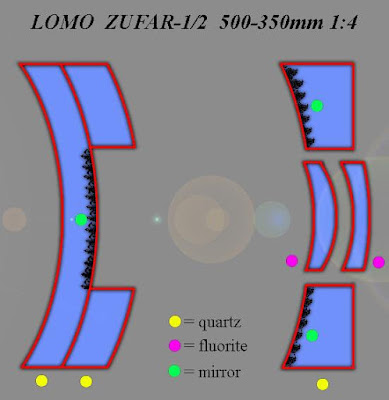Today tests shots of a Orchid hybride (
Oncostele Wildcat 'Golden Red Star') in reflected ultraviolet photography with a NYE OPTICAL Lyman-Alpha II f1.1/90mm UV-VIS-NIR lens in comparisoon with my UV-Nikkor 105mm lens. UV filters used was the Baader-U and the IDAS 340nm filter for the UV-Nikkor and a UV transmitting stack of UG11+S8612 as well as a 340nm filter for the Lyman Alpha 90mm, both rear mounted. All shots were done at f4.5 for the UV-Nikkor resp. f1.1 as the Lyman Alpha lens has no iris. Light source used was Xenon flash.
[click on image to see a larger one]
UV-Nikkor 105mm Visible Light:

UV-Nikkor 105mm Baader-U filter:

UV-Nikkor 105mm Baader-U filter (whitebalanced):

UV-Nikkor 105mm 340nm IDAS filter:

Lyman Alpha II 90mm UG11+S8612 filter:

Lyman Alpha II 90mm UG11+S8612 filter (whitebalanced):

Lyman Alpha II 90mm 340nm filter:

UV-Nikkor vs Lyman Alpha II 90mm in UV:

UV-Nikkor vs Lyman Alpha II 90mm in UV (whitebalanced):

UV-Nikkor vs Lyman Alpha II 90mm in UV (340nm):

This orchid has a very specific UV pattern, its petals are very
UV dark, but its lower petal lip has on the lower center a very UV
bright spot as well as on its center "nose" formation an UV reflecting spot and all this gets nicely visible.
Both lenses are very different animals so to speak, that Lyman Alpha II f1.1/90mm has extremely shallow DOF as compared to the f4.5 / 105mm UV-Nikkor lens, as well as some bent field, but it shows a very useful UV transmission. That rear mounted 340nm seems not to be the clearest filter, as the resulting image was a bit cloudy, not the fault of the lens.
I have written about the Nye Lyman-Alpha lenses previously
HERE and about this Orchid
HERE
Stay tuned, more will follow on that fascinating subject...
More info on this very interesting field may be found on my site
http://www.pbase.com/kds315/uv_photos





